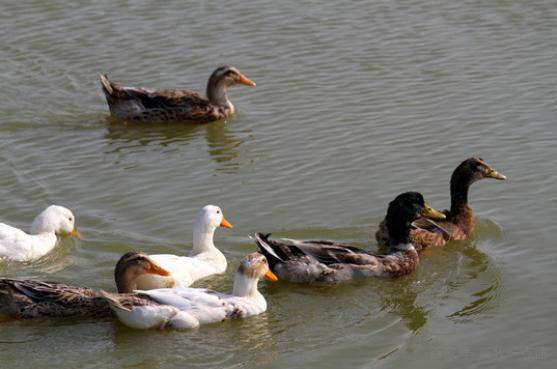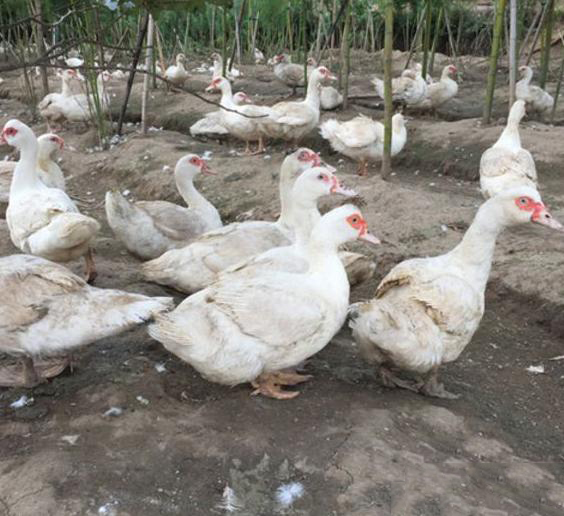Meat meal and meat and bone meal Meat meal, meat and bone meal from slaughterhouses, meat processing plants, that is, the edible part of the residual bone, viscera, ground meat and other dried and crushed products. Meat and bone meal are processed by wet method and dry method. Due to different raw materials, the finished product can be meat meal or meat and bone meal. If the bone content of meat meal exceeds 10%, it is meat and bone meal. Its nutritional characteristics are as follows:
 ① The protein content of crude protein meat meal and meat and bone meal varies greatly with different raw materials, with an average of 45%~ 45%, but some meat and bone meal with high bone composition is only about 35%. Crude protein mainly comes from phospholipid (cerebral phospholipid, lecithin, etc.), inorganic nitrogen (urea, creatine, etc.), keratin protein (horn, hooves, hair, etc.), connective tissue protein (collagen, bone glue, etc.), hydrolyzed protein and muscle tissue protein. The utilization value of phospholipid, inorganic nitrogen and keratin is very low, and the utilization value of connective tissue protein and hydrolyzed protein is also poor, while the utilization value of muscle tissue protein is also poor.
① The protein content of crude protein meat meal and meat and bone meal varies greatly with different raw materials, with an average of 45%~ 45%, but some meat and bone meal with high bone composition is only about 35%. Crude protein mainly comes from phospholipid (cerebral phospholipid, lecithin, etc.), inorganic nitrogen (urea, creatine, etc.), keratin protein (horn, hooves, hair, etc.), connective tissue protein (collagen, bone glue, etc.), hydrolyzed protein and muscle tissue protein. The utilization value of phospholipid, inorganic nitrogen and keratin is very low, and the utilization value of connective tissue protein and hydrolyzed protein is also poor, while the utilization value of muscle tissue protein is also poor.
 Usually, meat meal, meat and bone meal in the connective tissue protein more, its composition of amino acids are mainly proline, hydroxyproline and glycine, so the composition of amino acids is not good, lysine content is acceptable, but the content of methionine and tryptophan is low, utilization rate changes, some products will be unable to absorb due to excessive heating.
Usually, meat meal, meat and bone meal in the connective tissue protein more, its composition of amino acids are mainly proline, hydroxyproline and glycine, so the composition of amino acids is not good, lysine content is acceptable, but the content of methionine and tryptophan is low, utilization rate changes, some products will be unable to absorb due to excessive heating.
 The heat energy of this product mainly comes from protein and fat, and the content and quality of these two components are large, so the change of metabolic energy level is also large, generally 7. 98~11.72 joules/kg.
The heat energy of this product mainly comes from protein and fat, and the content and quality of these two components are large, so the change of metabolic energy level is also large, generally 7. 98~11.72 joules/kg.
③ Vitamins, minerals, fat soluble vitamins such as vitamin A, vitamin D due to A large number of destruction in the process of processing, less content, but rich in B vitamins, especially vitamin B12 content is high, other such as niacin, choline content is also high. Meat and bone meal is a good source of calcium and phosphorus, which is not only high in content, but also suitable in proportion. In addition, the contents of trace elements manganese, iron and zinc are also higher.

(4) Problems needing attention when using meat meal and meat and bone meal C Meat meal and meat and bone meal are a kind of protein raw materials with considerable variation in quality, and the feeding effect is not necessarily better than fish meal. Products that undergo heat treatment during production can reduce palatability and digestibility. Storage is not when the fat contained easy oxidation rancidity, and cause bad flavor, quality decline. The adulteration of this product is also more common, the common use of feather powder, hoof horn powder, blood powder and gastrointestinal contents, etc., should be tested when buying and using.



③ Vitamins, minerals, fat soluble vitamins such as vitamin A, vitamin D due to A large number of destruction in the process of processing, less content, but rich in B vitamins, especially vitamin B12 content is high, other such as niacin, choline content is also high. Meat and bone meal is a good source of calcium and phosphorus, which is not only high in content, but also suitable in proportion. In addition, the contents of trace elements manganese, iron and zinc are also higher.

(4) Problems needing attention when using meat meal and meat and bone meal C Meat meal and meat and bone meal are a kind of protein raw materials with considerable variation in quality, and the feeding effect is not necessarily better than fish meal. Products that undergo heat treatment during production can reduce palatability and digestibility. Storage is not when the fat contained easy oxidation rancidity, and cause bad flavor, quality decline. The adulteration of this product is also more common, the common use of feather powder, hoof horn powder, blood powder and gastrointestinal contents, etc., should be tested when buying and using.

